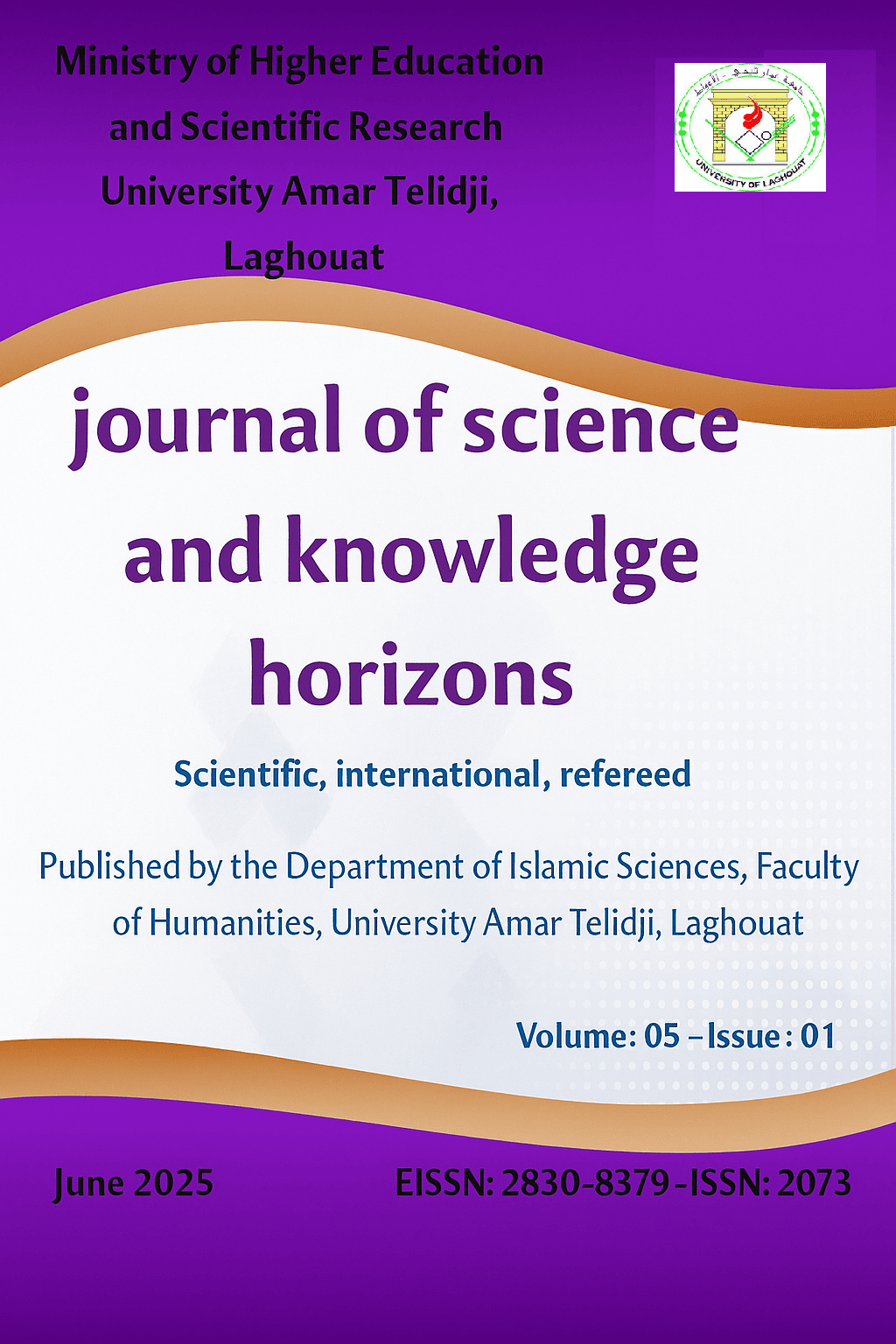Distance Teaching in Higher Education: The Impact of Online Teaching of an English Content-Based Course on Motivation and Learning Quality
Abstract
In Algeria, higher education has gone online under the 19-Covid pandemic since 2019. However, after a five-year experience with remote digital learning student outcomes are far below standards of achievement. This article presents the results of a quasi-experimental study conducted in 2023 after five academic years of experience with distance teaching. It compares the effects of both onsite and online teaching of a content-based English course (Cognitive Psychology) on students’ achievement and motivation. The study involved 249 undergraduate third-year English students and three teachers of Cognitive Psychology from the Department of English, Algiers 2 University. A mixed method was used in the study, the first consists of a post-test design that compares two semestrial exams’ scores through a t-test (SPSS 27), and the second is a questionnaire administered to teachers and students. The findings indicate that while most students view online teaching favorably they and most of the teachers recognize that conventional classroom learning is more likely to trigger their motivation in the process of learning/teaching and more effective in enhancing learning quality than digital distance learning; however, the paired samples t-test revealed no significant difference between the two teaching modes in terms of students’ achievement with a strong correlation between the scores in the two semesters’ exams and a negligible size effect. Besides, results indicate a low achievement of students following the two instructional formats which informs that students took no advantage of the flexibility they were offered in a hybrid environment. The findings imply that the teaching mode cannot impact motivation and learning quality as long as students lack the motivation to learn synchronically online or physically in class.
Downloads
References
institutions of higher education: Minority Business Students’ Perceptions. Business and Management Research, 5(2), 31-41.
Bullen, M. (1998). Participation and critical thinking in online university distance education. Journal
of Distance Education, 13(2), 1-32.
Burac, M.A.P., Fernandez, J.M., Cruz, M.A.A. & Cruz, J.D. (2019). Assessing the impact of e-learning
system of higher education institution’s instructors and students. IOP Conf. Series: Materials
Science and Engineering, 482, 1-8.
Comman, C.; Tiru, L.G., Mesesan-Shmitz, L.; Stanciu, C & Bularca, M.C. (2020). Online teaching in
higher education during the coronavirus pandemic: Students’ perspective. Sustainability, 12(24), 10367
Davis, F.D. (1989). Perceived usefulness, perceived ease of use, and user acceptance of information
technology. MIS Quaterly, 13, 319-339
Dhawan, S. (2020). Online learning: A panacea in the time of covid-19 crisis. Journal of Educational
Technology Systems, 49(1), 5-22.
Dookhan, K. (2018). Attitudes towards e-learning: The Case of mauritian students in public teis.
PEOPLE: International Journal of Social Sciences, 4, 628-643.
Ifijeh, G., Osinulu, I., Esse, U., Adewole-Odeshi, E., & Fagbohun, M. (2015). Assessing e-learning tools
in an academic environment: A study of availability and use among undergraduate students in
a Nigerian University. International Journal of Progressive Education, 11(2), 76-87
Galy, E., Downey, C., Johnson, J. (2011). The Effect of using e-learning tools in online and campus-
based classrooms on student performance. Journal of Information Technology Education, 10, 209-230.
Jiang, M (1998). Distance learning in a web-based environment. (Doctoral dissertation, University of
at Albany/SUNY,1998). UMI Dissertation Abstracts, No.9913679.
Kock, N., Verville, J., & Garza, V. (2007). Media naturalness and online learning: findings supporting
both the significant and no-significant-difference perspectives. Decisions Science Journal of Innovative Education, 5(2), 333-355.
Lockner, L. Wieser, H., Waldboth, S & Mischo-Kelling, M. (2016). Combining anatomy lectures with
e-learning activities: How do students perceive their learning experience? International Journal of Medical Education, 7, 69-74.
Mainka, C.& Benzies, A. (2006). E‐learning: Vision to reality interactive technol. and smart educ.
3(2), 101-11
Mohammad, M. (2012). The Impact of e-learning and e-teaching, Int. Sci. Index, Educational and
Pedagogical Sci, 6(2).
Radovic-Marcovic, M. (2010). Advantages and disadvantages of e-learning in comparison to traditional
forms of learning. Annals of University of Petrosani, Economics, 10 (2), 289-298.
Richardson, C. J., & Swan, K. (2003). Examining social presence in online courses in relation to
students’ perceived learning and satisfaction. Journal of Asynchronous Learning Networks, 7(1), 68-84.
Shishakly, R. (2016) Significance of learning management systems (Moodle) on the students of Ajman
University. United Arab Emirates IAMURE Int. J. of Educ. 18(1).
Shroff, R. H. & Vogel, D. R. (2009). Assessing the factors deemed to support individual student intrinsic
motivation in technology supported online and face-to-face discussions. Journal of Information Technology Education, 8, 59-85.
Slavin, R. (1983) Cooperative Learning. New York: Longman.
Soo, K. and Bonk, C. (1998) Interaction: What does It mean in online distance education? Educational
Resources Information Center, 2(8). U.S. Department of Education, Office of Educational Research and Improvement, ERIC No: ED428724
Spiceland, J. D., & Hawkins, P. C. (2002). The Impact on learning of an asynchronous active learning
course format. Journal of Asynchronous Learning Networks, 6(1):68-75.
Tham, C.M.& Werner, J.M. (2005). Designing and evaluating e-learning in higher education: A
Review and Recommendations. J. Leadersh. Organ, Stu., 11, 15-25.
Wang, Y. S. (2004). Assessment of learner satisfaction with asynchronous electronic learning systems.
Information & Management, 41, 75-86.
Ward, M., and Newlands, D. (1998). Use of the web in undergraduate teaching. Computers and
Education, 31(2), 171-184.
Wegner, S., Hollyway, K. C., & Carton, E. M. (1999). The Effect of internet-based instruction on student
learning. Journal of Asynchronous Learning Networks, 3(2), 1-9.
Yusuf, N., Al-Banawi, N. (2013). The impact of changing technology; The case of e.learning.
Contemporary Issues in Education Research, 6, 173-180.

This work is licensed under a Creative Commons Attribution-NonCommercial 4.0 International License.






